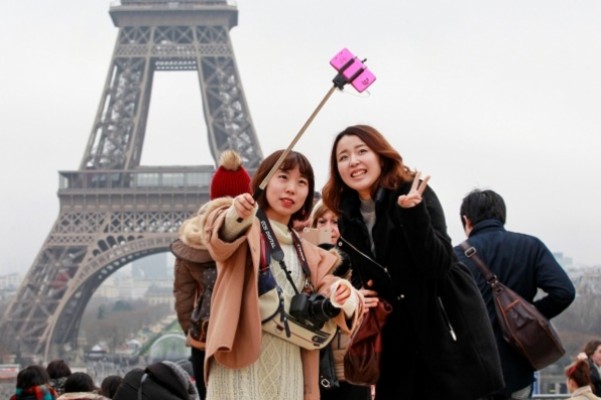| Europe has become the second most popular destination for Chinese outbound tourists | |

| Author: CSEBA / Xinhua |
| 23rd January 2018 |
| VENICE - As the flow of Chinese tourists to Europe shows an increase, sector operators from both sides start discussing how to better smooth their trip and make their stay easier in the continent. |
|
Over 6 million Chinese visited Europe for the first time in 2017, according to a latest report by the China Tourism Academy (CTA) -- a specialized institute under the Chinese National Tourism Administration (CNTA) -- and China's largest online travel agency Ctrip. Some 46 percent of them came from the east of China, with Shanghai, Beijing, Guangzhou, and Shenzhen as top departure cities. Furthermore, Europe has become the second most popular destination for Chinese outbound tourists in 2017, registering a 26.3-percent increase over 2016, according to Ctrip's airline ticket sales data. Their per-capita consumption during their trip grew by some 36 percent. The statistics were anticipated at a Sino-European tourism business summit held in Venice last Saturday, in parallel with the official launch of the 2018 EU-China Tourism year aimed at boosting the Sino-European tourism exchange through more cooperation and investments. Hundreds of operators at the event were offered a first chance to increase their contacts, improve cooperation, and plan new strategies. "A first benefit we expect from the 2018 EU-China Tourism Year is in terms of communication," Wang Chengyan, secretary general of the European Federation of Chinese Tourism, told Xinhua in an interview. "We do not only have the chance to meet counterparts in Europe, but also suppliers and partners in China, and we can talk to government sectors as well," Wang added. Yet, although figures suggest Chinese tourists' increasing appreciation for European countries, much could (and should) still be done to make their journey easier, according to the professional. "First of all, the Visa: we think this is the top factor to ensure their smooth coming to Europe," Wang stressed. "Our first hope is that visa procedures could be streamlined, and, as ultimate goal, that Chinese tourists could be finally exempted." A second crucial issue to lure more Chinese people was to ensure them a safe journey, since episodes of robbery were registered across Europe, Wang added. Thirdly, there was a need to make laws and regulations clearer. "We hope the relevant government sectors could better regulate the lawful work of tour operators in Europe, and help protect our federation's members," she said. "For example, in terms of division of responsibilities between operators in China and those in Europe: who should organize the tourists, who should carry them... We would like the rules to be clearer." An on-going example of the efforts towards Chinese travelers was provided by the "Welcome Chinese", a certification program, developed by the China Tourism Academy in partnership with Select Holding as operating company. The project aims at assisting European tourism providers in their distribution strategy on China, and guiding them through the best ways to welcome and assist Chinese clients. "We have created a simple standard of services, which set a benchmark for all providers dealing with the reception and hosting of Chinese tourists," Jacopo Sertoli, chief executive of Select Holding, told Xinhua. The certification program was open to various entities, such as hotels, airports, museums, theme parks, and shopping centers. According to the Italian entrepreneur, the more the Chinese tourism flow to Europe grows and diversifies, the larger is the need of tailored services. "The "new" Chinese tourists make a larger use of new technologies, and they want to travel alone, discover the territory, and do just what they like best," he said. The chief of the European Federation of Chinese tourism agreed. "We count more than 200 associated members (travel agencies and operators) across Europe, and from their feedback we can see the average profile of the Chinese tourist has changed," Wang confirmed. "The majority is now made of young travelers and tourists between 30s and 40s. There are more families, and also high-end tourism has increased, while traditional groups have dropped sharply." Finally, an increasing number of backpackers were looking for new itineraries and in-depth experiences. For them as well, there was "a need of more assistance in Europe". "For example, we see indications in Chinese in Venice or in Paris airport... We do hope this kind of information could be increasingly available in more airports and in different European cities," Wang said. |
 |
|
| 23rd November 2024 | |
| China has good news for Croatian citizens | |
 |
|
| 7th November 2024 | |
| Pelagos net farm products presented at the Shanghai fai | |